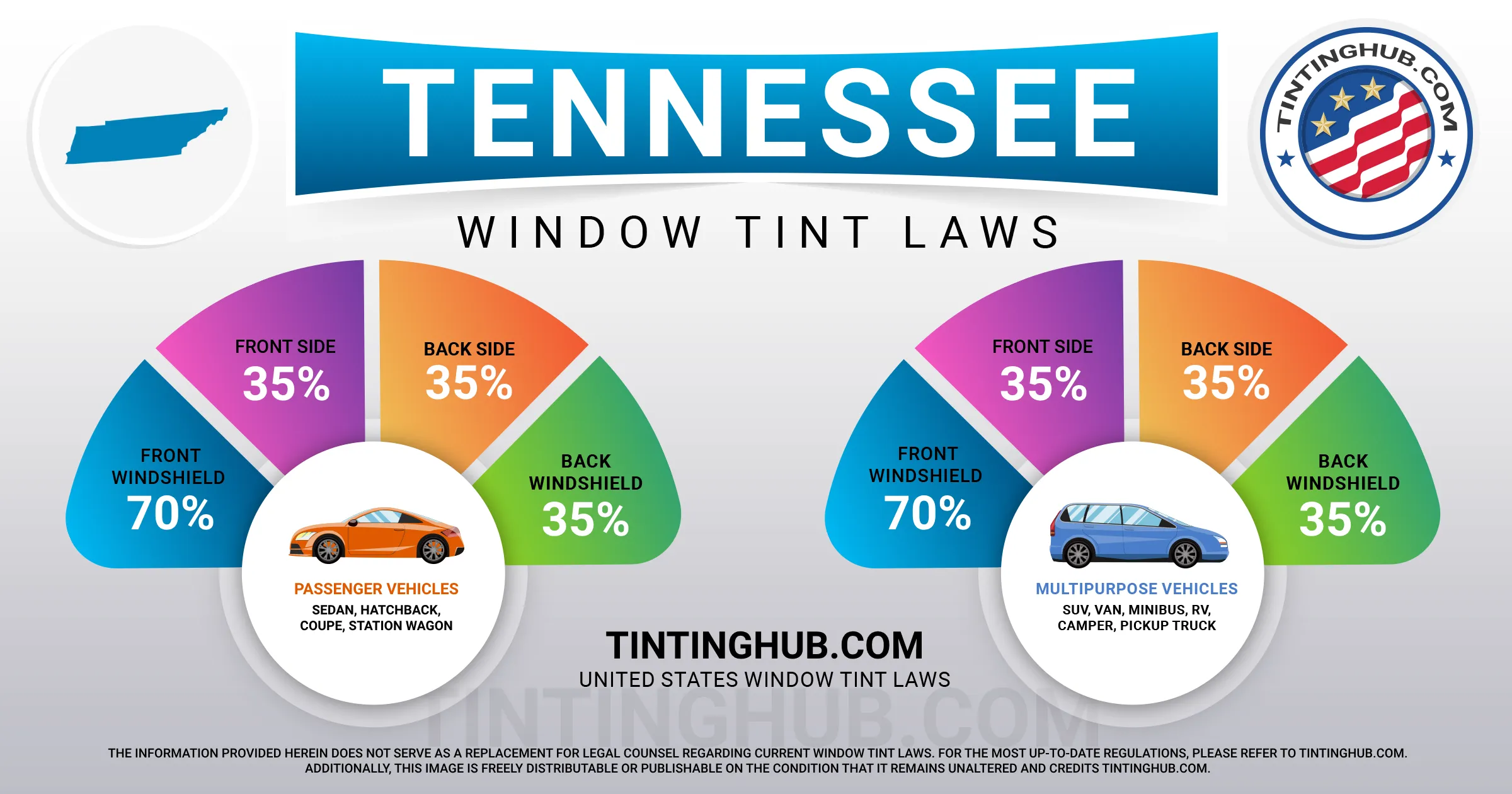Tennessee Window Tint Laws (Last Update 2024)

When it comes to maintaining your vehicle in Tennessee, understanding the state’s window tinting laws is crucial. Proper compliance not only ensures you stay on the right side of the law but also contributes to your comfort and safety on the road. In this article, we’ll delve into Tennessee’s window tint regulations, offering a clear and concise overview of what you need to know.

Tennessee Window Tinting Laws: The Basics
In Tennessee, the rules governing window tint are both specific and comprehensive. To begin with, the law permits a Visible Light Transmission (VLT) of 70% on windshields. However, for all other windows, a minimum of 35% VLT is required, meaning they must allow more than 35% of light to pass through. Importantly, these regulations apply to all types of vehicles.
A Glimpse into History
The window tinting laws in Tennessee have been in place since 1990. It’s essential to be aware of this foundation, as adhering to these regulations is a vital part of responsible vehicle ownership.
Deciphering Tint Darkness
VLT, or Visible Light Transmission, refers to the percentage of visible light allowed through your car windows. Tennessee’s regulations differentiate between sedan cars and SUVs or vans, specifying different VLT requirements for each.
Tint Darkness for Sedans
- Windshield: More than 70% light transmission is required; no darkness on AS-1 line.
- Front Side Windows: Must allow more than 35% of light in.
- Back Side Windows: Must allow more than 35% of light in.
- Rear Window: Must allow more than 35% of light in.
Tint Darkness for SUVs and Vans
- Windshield: More than 70% light transmission is required; no darkness on AS-1 line.
- Front Side Windows: Must allow more than 35% of light in.
- Back Side Windows: Must allow more than 35% of light in.
- Rear Window: Must allow more than 35% of light in.
Understanding Window Tint Reflection
Window tint not only darkens your windows but also plays a role in reflecting incoming light, reducing glare and heat. In Tennessee, there are specific regulations regarding window tint reflection that you need to be mindful of.
Tint Reflection for Sedans
- Front Side Windows: No mirrored or metallic appearance allowed.
- Back Side Windows: No mirrored or metallic appearance allowed.
Tint Reflection for SUVs and Vans
- Front Side Windows: No mirrored or metallic appearance allowed.
- Back Side Windows: No mirrored or metallic appearance allowed.
Additional Tennessee Window Tint Rules and Regulations
Apart from VLT and reflection regulations, Tennessee has other important laws and regulations concerning window tinting. These include:
- Side Mirrors: There are no restrictions on side mirrors.
- Restricted Colors: No specific colors of tint are explicitly restricted.
- Certificates: Film manufacturers are not required to certify the film they sell in Tennessee.
- Stickers: The use of a sticker to identify legal tinting is required between the film and the glass on the driver’s side window.
- Medical Exceptions: Tennessee law allows medical exemptions for special tint. For specific terms and conditions regarding these exemptions, consult your state law.
It’s worth noting that while these regulations are state-wide, there may be local variations in interpretation in different counties or regions. Therefore, it’s advisable to double-check this information with your local Department of Motor Vehicles or law enforcement authorities.
Stay Informed
Our information regarding window tint laws in Tennessee was last updated in 2023. If you come across any inaccuracies or updates that need attention, please don’t hesitate to contact us. We are committed to providing you with accurate and up-to-date information on window tint laws. As a trusted industry leader, we take pride in assisting you in staying informed and in compliance with the law.